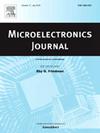Temperature dependence of dynamic performance of SiC MOSFETs in a half-bridge configuration
IF 1.9
3区 工程技术
Q3 ENGINEERING, ELECTRICAL & ELECTRONIC
引用次数: 0
Abstract
High-temperature robustness of switching device is crucial for the system operation reliability. Given the importance of accurate SiC MOSFET dynamic analysis in high-temperature settings, comprehensive investigations are needed. Thus, this paper delves into the dynamic characteristics of SiC MOSFETs under high temperature conditions. Firstly, a piecewise equivalent circuit model is introduced, which provides a framework for analyzing the switching behavior and the influence of reverse recovery on switching performance. Then, the roles of parameters-threshold voltage, internal gate resistance, and gate to source capacitance are explained in governing the high temperature dynamic performance of SiC MOSFETs. Through systematic testing and analysis, the switching characteristics and reverse recovery performance of three 1.2 kV SiC MOSFETs are carefully evaluated across varying temperatures. According to our study, the reverse recovery phenomenon is identified as the main cause of turn-on performance degradation at high temperatures. Furthermore, the effect of the SiC MOSFET structure on the dynamic behavior is discussed. This work discusses the impact of SiC MOSFET structure on dynamic behavior, specifically in the context of a half-bridge configuration. This assessment deepens understanding of SiC MOSFET behavior at high temperatures, guiding strategies to boost efficiency and reliability in power electronics.
半桥结构SiC mosfet动态性能的温度依赖性
开关器件的高温稳健性对系统运行的可靠性至关重要。考虑到在高温环境下精确的SiC MOSFET动态分析的重要性,需要进行全面的研究。因此,本文深入研究了SiC mosfet在高温条件下的动态特性。首先,引入了一个分段等效电路模型,为分析开关行为和反向恢复对开关性能的影响提供了一个框架。然后,解释了阈值电压、内部栅极电阻和栅极源电容等参数在控制SiC mosfet高温动态性能中的作用。通过系统的测试和分析,仔细评估了三个1.2 kV SiC mosfet在不同温度下的开关特性和反向恢复性能。根据我们的研究,反向恢复现象被确定为高温下导通性能下降的主要原因。进一步讨论了SiC MOSFET结构对其动态性能的影响。这项工作讨论了SiC MOSFET结构对动态行为的影响,特别是在半桥结构的背景下。该评估加深了对高温下SiC MOSFET行为的理解,指导了提高电力电子效率和可靠性的策略。
本文章由计算机程序翻译,如有差异,请以英文原文为准。
求助全文
约1分钟内获得全文
求助全文
来源期刊

Microelectronics Journal
工程技术-工程:电子与电气
CiteScore
4.00
自引率
27.30%
发文量
222
审稿时长
43 days
期刊介绍:
Published since 1969, the Microelectronics Journal is an international forum for the dissemination of research and applications of microelectronic systems, circuits, and emerging technologies. Papers published in the Microelectronics Journal have undergone peer review to ensure originality, relevance, and timeliness. The journal thus provides a worldwide, regular, and comprehensive update on microelectronic circuits and systems.
The Microelectronics Journal invites papers describing significant research and applications in all of the areas listed below. Comprehensive review/survey papers covering recent developments will also be considered. The Microelectronics Journal covers circuits and systems. This topic includes but is not limited to: Analog, digital, mixed, and RF circuits and related design methodologies; Logic, architectural, and system level synthesis; Testing, design for testability, built-in self-test; Area, power, and thermal analysis and design; Mixed-domain simulation and design; Embedded systems; Non-von Neumann computing and related technologies and circuits; Design and test of high complexity systems integration; SoC, NoC, SIP, and NIP design and test; 3-D integration design and analysis; Emerging device technologies and circuits, such as FinFETs, SETs, spintronics, SFQ, MTJ, etc.
Application aspects such as signal and image processing including circuits for cryptography, sensors, and actuators including sensor networks, reliability and quality issues, and economic models are also welcome.
 求助内容:
求助内容: 应助结果提醒方式:
应助结果提醒方式:


